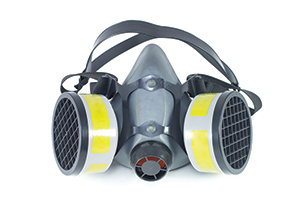Employers could face jail time for failing to pay safety fines

|
Contempt and criminal charges increasingly are being pursued against employers that fail to pay delinquent safety fines, according to Bloomberg Law. Undertaken by the Department of Labor, such legal action can lead to company owners facing possible jail time.
In a recent case, Travis Slaughter, the owner of Great White Construction Inc., Jacksonville, Fla., faces possible jail time after the DOL asked the U.S. Court of Appeals for the Eleventh Circuit in August to hold him in contempt for failing to pay more than $2 million in accrued Occupational Safety and Health Administration fines. In June 2018, Great White Construction had been ordered to pay more than $1.5 million in safety fines and penalties within 10 days and failed to do so; the fines have since grown to $2.2 million.
In July, the U.S. Court of Appeals for the Third Circuit held a New Jersey concrete company’s successor and sole owner in contempt for not paying nearly $500,000 in fines, and in 2015, the DOL won a contempt order when a company did not pay more than $400,000 in safety fines from 2000 to 2011.
Benjamin Ross, a safety compliance attorney at Fisher & Phillips LLP, Atlanta, says seeking jail time for employers still is considered uncommon and “in every situation so far, it’s drawn out over years … where a company doesn’t negotiate a payment plan or seek or resolve the outstanding payment and ignores warnings from OSHA.”
An OSHA representative said to ensure safe workplaces, the agency “will use all appropriate and available legal tools to ensure that those who violate the law are held accountable for their obligations under the Occupational Safety and Health Act.”
Statute authorizes OSHA to handle retaliation complaints
Worker retaliation complaints now are handled by the Occupational Safety and Health Administration after the Taxpayer First Act was signed into law July 1.
The statute authorizes OSHA to investigate complaints of retaliation against employees for providing information regarding underpayment of tax; violations of internal revenue laws; or violations of federal law relating to tax fraud to the IRS, another federal entity listed in the statute, a supervisor, or any other person working for the employer who has the authority to investigate, discover or terminate misconduct.
The law also prohibits retaliation against employees for testifying, assisting with or participating in any administrative or judicial action taken by the IRS relating to an alleged underpayment of tax, violation of internal revenue law or violation of federal law relating to tax fraud.
OSHA will process whistleblower complaints using procedures under the Wendell H. Ford Aviation Investment and Reform Act for the 21st Century until an interim final rule is issued.
OSHA approves new respirator fit-testing protocols

|
The Occupational Safety and Health Administration has issued a final rule giving employers two new fit-testing protocols for ensuring employees’ respirators fit properly. The rule took effect Sept. 26.
The new protocols are:
- Modified ambient aerosol condensation nuclei counter quantitative fit-testing protocol for full-facepiece and half-mask elastomeric respirators
- Modified ambient aerosol condensation nuclei counter quantitative fit-testing protocol for filtering facepiece respirators
Both protocols are variations of the original OSHA-approved ambient aerosol condensation nuclei counter protocol but have fewer test exercises, shorter exercise duration and a more streamlined sampling sequence.
The two quantitative methods join the four existing in Appendix A of OSHA’s Respiratory Protection Standard, which contains mandatory respirator fit-testing protocols employers must choose from to protect employees from hazardous airborne contaminants. The rule does not require employers in general industries, shipyard employment and construction to update or replace their current fit-testing methods and does not impose additional costs.
OSHA formally names Scott Ketcham to construction safety role
 Ketcham
Ketcham
|
After serving as the Occupational Safety and Health Administration’s acting head of the Directorate of Construction for several months, Scott Ketcham now is the official director. Ketcham succeeds Director Dean McKenzie, who passed away in November 2018.
Ketcham began with OSHA in 1998 as an inspector in Texas and Idaho before moving to Alaska to become OSHA’s area director. He became deputy construction director at OSHA’s Washington, D.C., headquarters in February 2017.
Ketcham “has demonstrated strong leadership throughout his OSHA career, and I am confident he will continue to achieve the mission of [ensuring] safe and healthful working conditions for construction workers in his new position,” said Loren Sweatt, OSHA’s deputy assistant labor secretary, in a written statement.
Safety inspections on pace to match recent annual totals
Despite a general decline in the number of federal inspectors since 2014, an Occupational Safety and Health Administration official told Bloomberg Law federal workplace safety inspections are on pace to match annual inspection totals for recent years.
As of the end of July, OSHA had conducted 24,256 inspections; fiscal year 2019 ended Sept. 30. During the past three fiscal years, the agency averaged about 32,000 inspections annually. As during recent years, about 50% of the inspections during fiscal year 2019 were at construction sites.
The number of OSHA inspections began to climb during fiscal year 2017 after hitting a 20-year low during the last year of the Obama administration. At a meeting of the American Bar Association’s Occupational Safety and Health Committee in March, Department of Labor Solicitor Kate O’Scannlain reaffirmed OSHA would continue to pursue health and safety violators.
Construction company sued for alleged sex discrimination
The Equal Employment Opportunity Commission filed a lawsuit Aug. 27 against BHT Constructions LLC, Davie, Fla., alleging the company violated federal law when it refused to hire a female applicant as a heavy machine operator based on sex, according to eeoc.gov.
The lawsuit states the female applicant has more than 20 years of experience as a heavy machine operator, and BHT Constructions was seeking candidates for numerous heavy machine operator positions. However, when the female applicant sought employment at a work site in Clewiston, Fla., she was denied employment and told by a work-site supervisor they “do not hire women.”
The alleged conduct violates Title VII of the Civil Rights Act of 1964, which prohibits employers from discriminating based on sex. The Equal Employment Opportunity Commission filed suit in the U.S. District Court for the Southern District of Florida, Fort Lauderdale Division, after attempts to reach a prelitigation settlement through its conciliation process were unsuccessful. The agency seeks back pay and compensatory and punitive damages for the discrimination victim, as well as injunctive relief to prevent future discrimination.
DOL finalizes threshold for overtime eligibility
On Sept. 24, the Department of Labor announced it will publish a final overtime rule that sets the minimum salary threshold for overtime eligibility at $35,568. The threshold previously was set at $23,000.
The regulations implement the Fair Labor Standards Act’s overtime mandate, and a senior DOL official says an estimated 1.3 million additional U.S. workers will be eligible for overtime pay. The final rule will take effect Jan. 1, 2020.
The threshold is slightly higher than the $35,308 proposed in the initial draft of the rule and will allow employers to count nondiscretionary bonuses, incentives and commissions as up to 10% of an employee’s salary level provided those bonuses are paid annually. The FLSA’s exemption threshold for highly compensated employees will be $107,432, which is lower than in the initial draft but higher than the previous threshold of $100,000.
Some stakeholders were concerned with DOL’s methodology for calculating the new threshold, which ties the salary level to the 20th percentile of earnings of full-time salaried workers in the retail sector within the lowest-wage census region—the South.
Employee advocates say the new threshold is too low, citing the $47,000 threshold proposed by the Obama administration in 2015. The Economic Policy Institute estimates more than 8 million workers who would have been eligible for overtime under that rule will not be eligible under the new rule.



